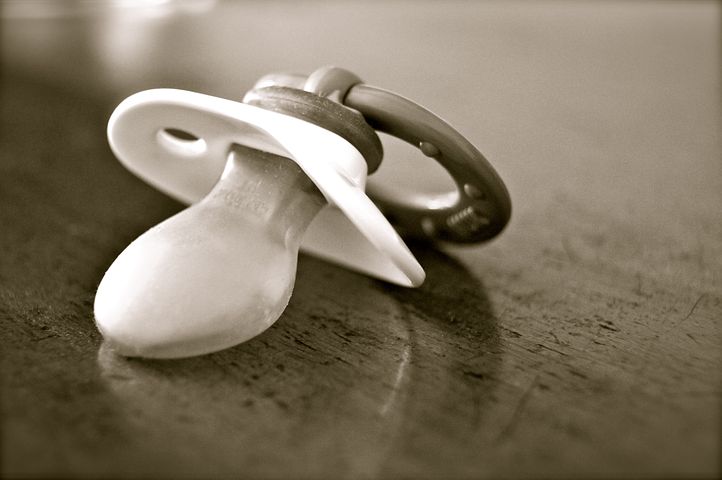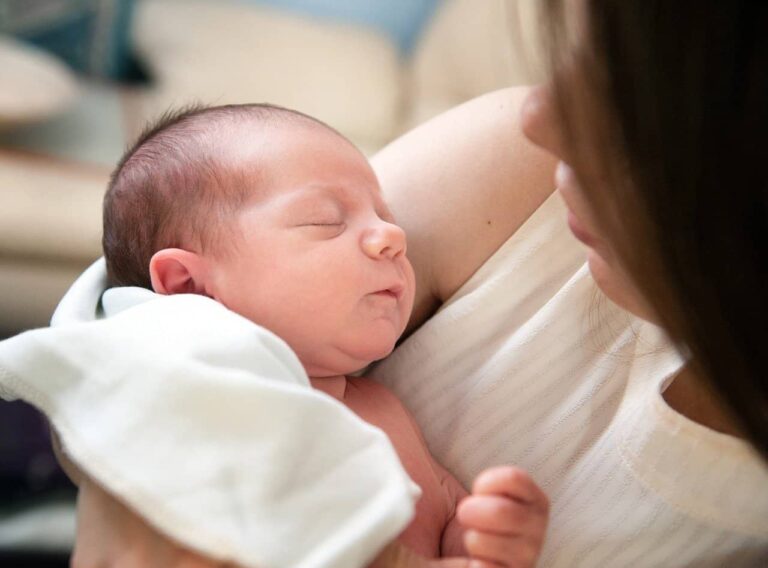How To Get Baby To Sleep In Crib After Co Sleeping
As a mother of four, I’ve navigated the challenges and joys of co-sleeping with each of my children. Through years of firsthand experience, I’ve gathered insights and practical advice that I’m eager to share with fellow parents in this guide on transitioning your baby from co-sleeping to crib sleeping.
In this article, I’ll provide tips on how to get your baby to sleep in a crib after co-sleeping. Sleeping close to your child is a cherished experience that I, and many parents, hold dear. The warmth and bond formed during those nights are truly special.
Co-sleeping offers numerous benefits for both the child and the parent. According to a study published in the Journal of Pediatric Health, babies who co-sleep tend to fall asleep faster and experience longer, uninterrupted sleep. Further research from the American Academy of Pediatrics suggests that co-sleeping fosters a stronger emotional bond between babies and their caregivers. And, from my own experience and a 2014 study in the Sleep Medicine Journal, co-sleeping can lead to better sleep quality for us parents.
However, co-sleeping also has its challenges. Balancing intimacy with a partner and ensuring a safe sleep environment for the baby can be complex. As my children grew, I faced the decision of transitioning them to their own sleeping space.
Transitioning your baby to her own crib requires careful planning and consideration. It’s not a decision made overnight but a gradual process that prioritizes the comfort and well-being of your child. With the right strategies, which I’ll share in this guide, you can ensure a smooth transition for your little one.
Put Her Crib In Your Room

Toddlers are very sensitive and will notice a change if you make it abrupt. Therefore, you need to make the transition smooth for the baby. Instead of putting your little one in her own room, start by putting her in her crib but in your room. The fact that she is used to the room will make the transition easy.
The trick here is to first make her comfortable sleeping on her own. Once she has adjusted to sleeping entirely in her own space, you can move her crib back to her room. Please don’t take your child to sleep in a separate room when you decide to stop co-sleeping with her. Instead, make the transition smooth by first separating her from your bed then moving her to her own room once you are sure that she has fully adjusted to sleeping on her own.
Make The Process Gradual
Making the transition process abrupt will not go well with your baby. It is recommended that you make the process gradual. For instance, you can introduce her to her new crib during her usual afternoon naptime so that she can get used to the crib. When you are convinced that she is comfortable sleeping on her new crib, you move to the next stage of letting her sleep on her crib the entire night.
Keep a close eye on her to see if she is comfortable. If you notice that she wakes up multiple times during the night or is generally uncomfortable in the crib, then that clearly indicates that she is not yet ready for a complete transition.
On the other hand, if she sleeps the entire night comfortably in her new crib, it is a clear sign that she is ready for a complete transition. Don’t speed up the process; only transition her from one stage to another when she is ready.
Make Your Presence On Her Crib
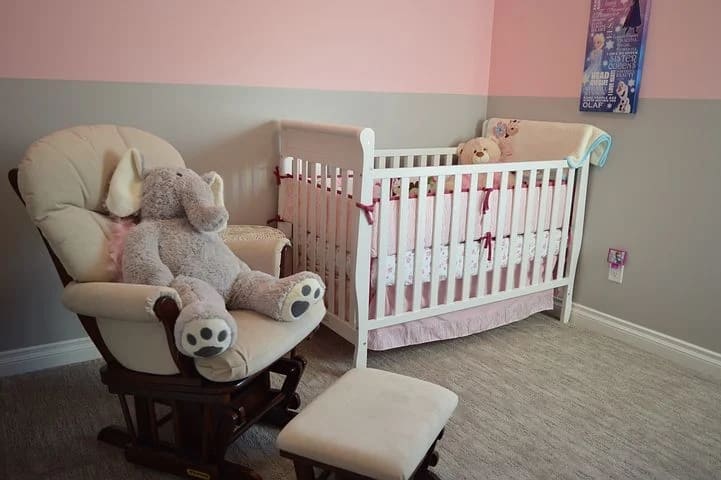
Nothing makes a toddler feel more comfortable and calm than her mother’s scent. You don’t have to be physically present in your child’s crib to let your child know you are close to her. For instance, you can hide under her crib a T-shirt that has your scent. Your child is more likely to sleep the entire night in her crib in a separate room if she sniffs your scent.
Don’t Leave Her Room Until She Lets You
Most parents make a mistake by leaving their toddler’s room before they are ready to be left alone. Just because your little one has closed her eyes does not mean that she is asleep. Children take time to go into a deep sleep. Before you leave your child at her crib, make sure that she is sleeping and ready to be left alone.
Sit in a chair next to her crib and sing a lullaby or soothe her to let her know that you are close to her. Once she is deeply asleep, start moving away from her gradually while watching her reaction. If she does not react, then it means that she is ready to be left alone. On the other hand, if she starts crying or moving around the bed, then it means that she is not ready to be left alone. Stay close to your little one until she is ready to be left.
Sleep In Her Room
If your child’s room has two beds or enough space to place a sleeping bag or a comfortable chair, sleep with her in the room for a few nights until she gets used to her new crib. Your little one can sleep anywhere in the house provided she is with you. You will make the transition smooth if you sleep in her room for a few nights until she gets comfortable with her new environment. You don’t have to sleep the entire night in her room, but you should stay close to her until you are confident that she is ready to be left alone.
Related Articles:
8 Month Sleep Regression Signs All You Need To Know
Baby Climbed Out Of Crib, Now What Do I Do?
When Do Babies Go Down To One Nap
Make Her New Crib Comfortable
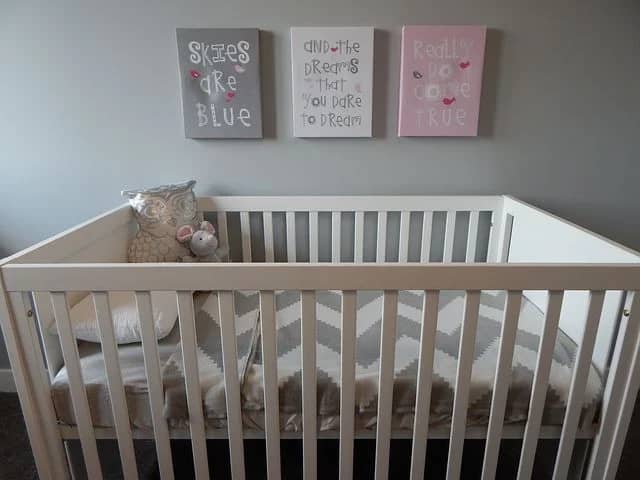
Your toddler crib’s general look will determine if she will adapt to her new crib fast or not. If the crib is not friendly, then the transition process will be bumpy. On the other hand, if her new crib is friendly and comfortable, the transition will be easy.
So, before you move your child to her new crib, make it comfortable and friendly. This includes buying her a cozy crib, decorating her room with toys, and other accessories that she loves installing curtains that block light entirely, among many others. You can also buy a noise machine to help her sleep soundly.
Sleep Train Your Child
You can also sleeptrain your little one before you move her to the new crib. This can take anywhere from 3 days to a few weeks, depending on how your child responds to the training.
You need to be patient with your kid when sleep training her. Some kids respond fast, while others take time. Just because your sister taught her kid to sleep in 4 days does not mean that the same will happen to your kid.
Be gentle with your child and establish a consistent routine to make the training a success. If you find the process challenging, seek help from a sleep expert. The timing of the training is also critical. It is advised that you start sleep training on a weekend when you have minimal commitments.
Be Consistent
Consistency is the secret to success. Many parents usually give up along the way if their toddlers don’t respond as fast as they want them to. The journey to get your baby to sleep on her crib in a separate room will not be smooth. There are times when you will feel like giving up, especially when your little one makes little progress. However, the difference between success and failure is consistency. So, if you have decided that your child will sleep in her own crib on afternoon naps, ensure that you stick to that plan until your child gets used to it.
What is the difference between co-sleeping and bed-sharing?
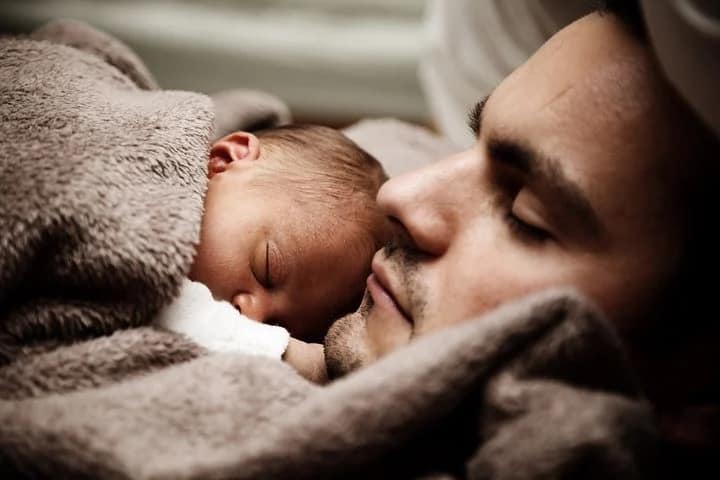
Bed-sharing and co-sleeping are used interchangeably by many people, but they are not the same thing. Co-sleeping means sleeping close to your little one. It can be on the same bed or chair. The critical thing here is being near your child. On the other hand, bed-sharing means sharing the same bed, such as a shared room or family bed with your child. In other words, bed-sharing is a subset of co-sleeping.
What age should you stop co-sleeping?
The American Academy of Pediatrics (AAP) recommends that you should stop co-sleeping with your baby when she is at least six months preferably one year. The AAP recommends that parents should closely monitor their children’s development to know if they are ready to sleep on a crib.
You should also need to be prepared as a parent to stop co-sleeping with your baby. Please don’t stop co-sleeping with your baby if she is not above six months. Even though it may seem like a lot of time, the benefits of co-sleeping with your baby for at least six months are significant. It not only makes her feel safe, but it also increases the mother-child bond and makes nighttime breastfeeding easier.
The AAP also strongly opposes stopping your child to co-sleep when she is not yet ready. Even if your child is one year old and not ready to sleep in her own crib, you should give her time until she is ready. Some parents co-sleep with their babies until they are three years old.
There is no specific time when you should stop co-sleeping with your toddler. The key thing here is that she must be ready. Forcing your kid out of your arms before she is ready will be disastrous both to the child and you, the parent.
Is it okay to leave my baby awake in a crib at night?
Suppose you are determined to instill good sleeping habits in your baby and teach her to fall and stay asleep without too much involvement. In that case, it is okay to leave your baby fully awake in her crib at and let her fall asleep independently. However, you need to closely monitor and intervene if you notice that she is uncomfortable.
At what age should a child stop sleeping with their parents?
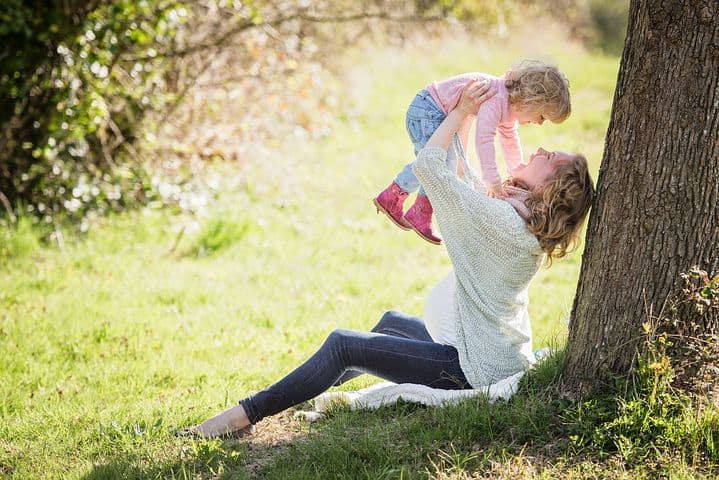
This question has a lot of diverse opinions. Some parents sleep with their kids until they reach five years, while others stop sleeping with their kids when they get one year. It all depends on your parenting style and your child’s development. The AAP recommends that parents stop sleeping with their kids between 2 and 3 years. Some of the signs that indicate it is time to move your child to her own crib include:
- Your child sleeps unsupervised.
- Your child understands imaginary boundaries. If your child does not climb out of her crib when you put her to sleep, then that is a sign that she understands limitations, thus ready to move to her crib.
- Your toddler asks you to get her own bed- If your child asks you to get her a crib or admires other kids’ crib, that is a sign that she is ready to start sleeping independently.
Transitioning from co-sleeping to a crib
As a mother of four, I’ve personally navigated the challenges of transitioning each of my children from co-sleeping to their own cribs. Every transition is unique and can be challenging for both babies and parents. Toddlers naturally seek comfort and can resist changes that disrupt their familiar routines. However, with patience, consistency, and the right strategies, they adapt and thrive. Drawing from my own experiences and insights from fellow parents, here are some tried-and-true tips to help you transition your child from co-sleeping to her crib:
1. Establish a Predictable Bedtime Routine
From my own journey and research, I’ve found that toddlers thrive on predictability. Surprises and inconsistencies can make transitions harder. By establishing a consistent bedtime routine, you’re setting the stage for a smoother transition. This can include activities like reading a bedtime story, singing a lullaby, or gentle rocking.
2. Create a Calm Bedtime Atmosphere
When it’s time for bed, ensure the environment is calm and reassuring. As you place her in the crib, use soothing tones to reassure her. If she becomes upset or cries, gently remind her that she’s safe and loved.
3. Stay Beside Her and Offer Soothing Comfort
One of the most valuable lessons I’ve learned is the power of presence. After placing her in the crib, remain by her side, offering quiet comfort. Whether it takes a few minutes or longer, your presence can make a world of difference. Over time, she’ll find comfort in her new sleeping space, knowing you’re nearby.
4. Consistency is Key
Transitioning from co-sleeping to a crib is a journey, not a one-time event. There will be nights when your little one may resist or protest. It’s essential to remain consistent in your approach. Even on challenging nights, stick to your routine and remain patient. Your dedication and consistency will pave the way for a successful transition.
Conclusion
Getting your baby to sleep in a crib after co-sleeping is challenging but possible. You need to be patient with your little one and be consistent to make the transition a success. Hopefully, these tips on how to get your baby to sleep in a crib after co-sleeping will help your transition. Also, don’t shy away from seeking help from an expert if the transition is overwhelming.

